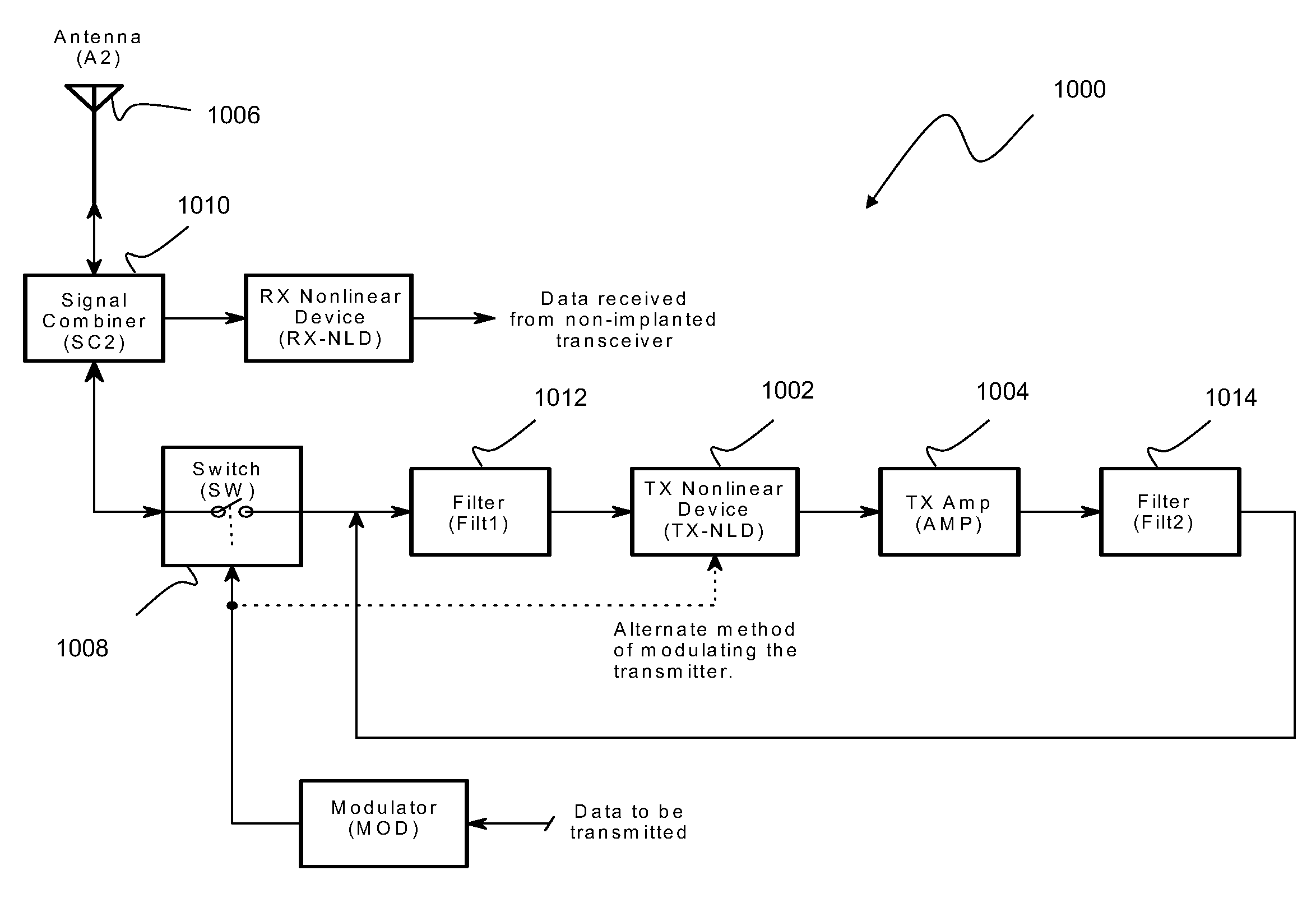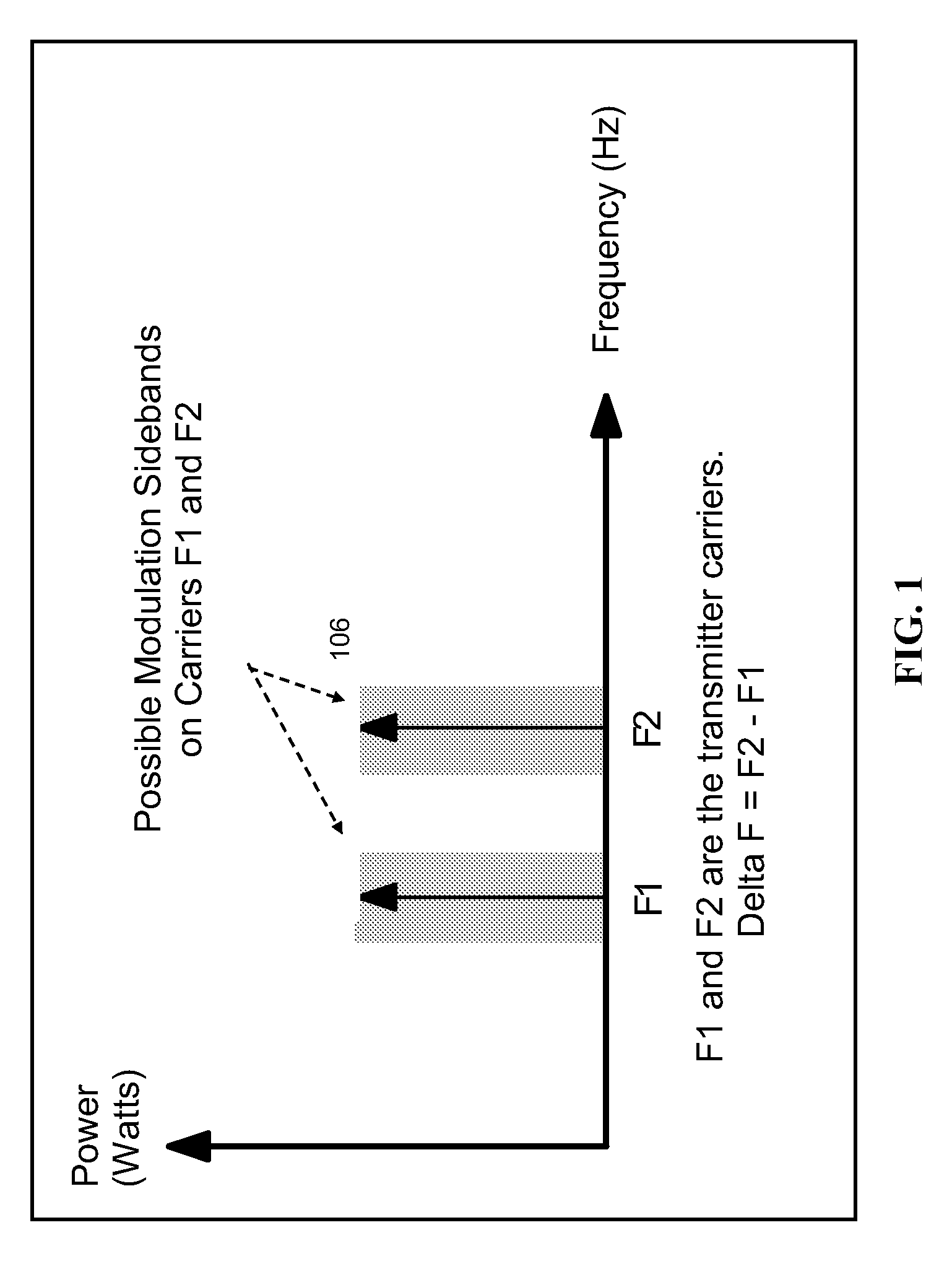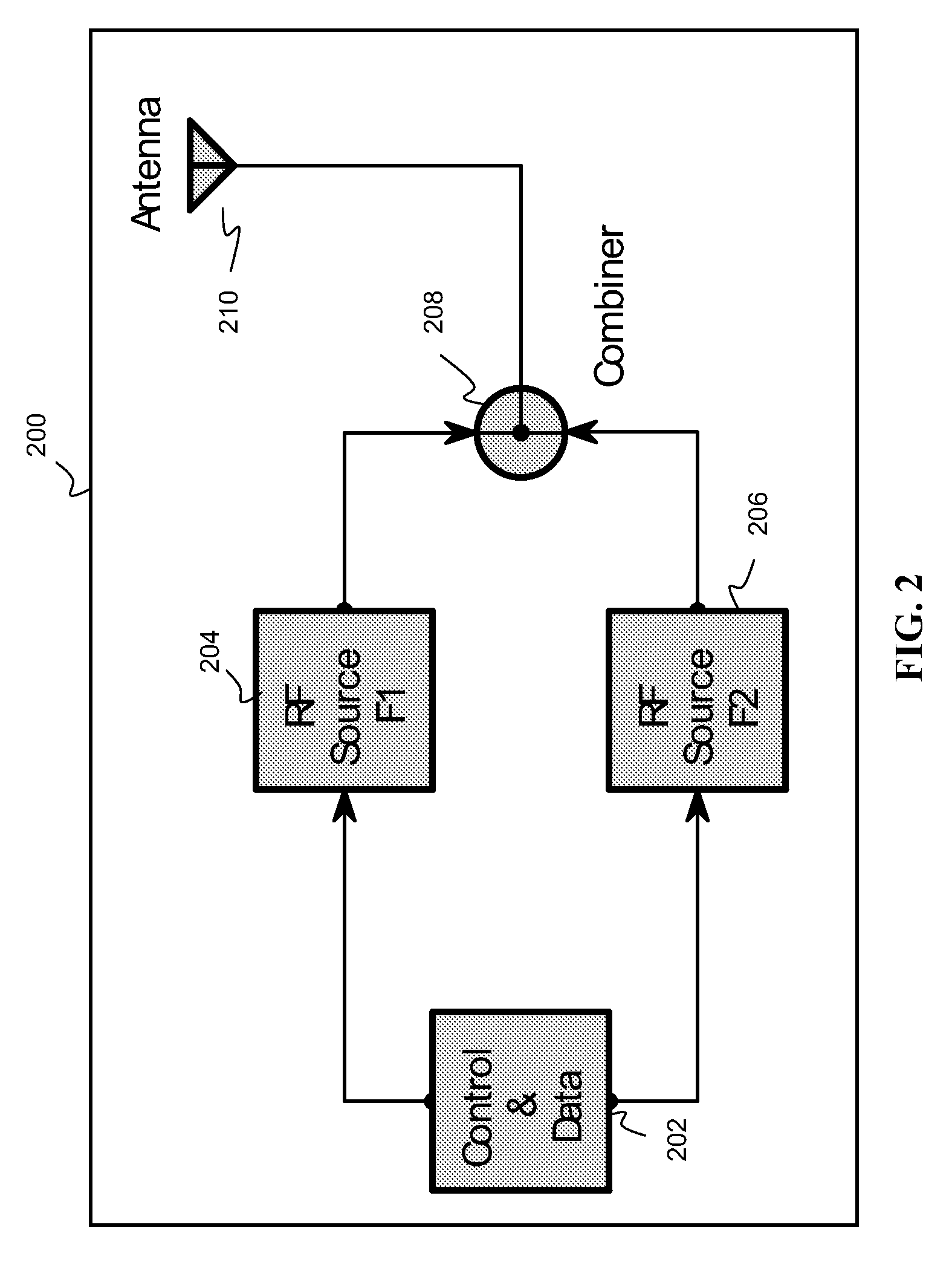Radio communications system designed for a low-power receiver
- Summary
- Abstract
- Description
- Claims
- Application Information
AI Technical Summary
Benefits of technology
Problems solved by technology
Method used
Image
Examples
Embodiment Construction
[0107]The following description is of the best mode presently contemplated for carrying out the invention. This description is not to be taken in a limiting sense, but is made merely for the purpose of describing the general principles of the invention. The scope of the invention should be determined with reference to the claims.
[0108]FIG. 1 shows, schematically, the frequency spectrum of a transmitter with two high frequency carriers at different frequencies F1 and F2. The high frequency carriers may not have modulation sidebands (i.e. they may be only CW carriers), or one, or both carriers may have modulation sidebands 106. None, one, or all high frequency carriers may be modulated. In the following the high frequency carriers may be referred to simply by carriers. The carriers of two frequencies mix with each other and produce new signals at the frequency F1+F2 and at delta F=|F2−F1|. Delta F can be used for a low power receiver design, because although F1 and F2 may be very high...
PUM
 Login to View More
Login to View More Abstract
Description
Claims
Application Information
 Login to View More
Login to View More - R&D Engineer
- R&D Manager
- IP Professional
- Industry Leading Data Capabilities
- Powerful AI technology
- Patent DNA Extraction
Browse by: Latest US Patents, China's latest patents, Technical Efficacy Thesaurus, Application Domain, Technology Topic, Popular Technical Reports.
© 2024 PatSnap. All rights reserved.Legal|Privacy policy|Modern Slavery Act Transparency Statement|Sitemap|About US| Contact US: help@patsnap.com










